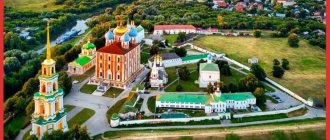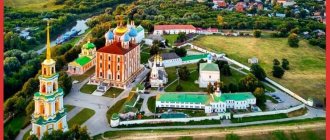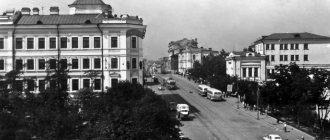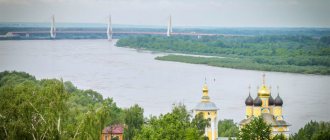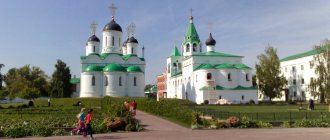What holiday is it today?
February 10, 2022, Thursday
Today are holidays, events: Diplomat's Day Tomorrow: World Sick Day Discovery of insulin
Today is the Orthodox holiday: St. Ephraim the Syrian. Venerable Ephraim of Novotorzhsky. Venerable Ephraim of Pechersk, Bishop of Pereyaslavl. Venerable Theodosius of Totem, Spasosumorin of the monastery, leader and founder... Tomorrow: Transfer of the relics of the holy martyr Ignatius the God-Bearer. Saints Gerasim, Pitirim, Jonah, bishops of Great Perm, Ustva...
Today is a national holiday: Ephraim's Day... Tomorrow: Lawrence's Day
Seasons
Seasons, four periods of the year (spring, summer, autumn and winter) characterized by certain average temperatures. The period during which the Sun passes through one of these sectors is called the season. Spring in the Northern Hemisphere and autumn in the Southern Hemisphere begin when the Sun passes through the initial circle of declination and its right ascension is 0° (vernal equinox). Summer in the Northern Hemisphere and winter in the Southern Hemisphere occur when the sun's right ascension is 90° (summer solstice). Autumn in the Northern Hemisphere and spring in the Southern Hemisphere begin when the sun's right ascension is 180° (autumnal equinox). The beginning of winter in the Northern Hemisphere and summer in the Southern Hemisphere is considered to be the winter solstice, when the direct ascension of the Sun is 270°... Next: Seasons. Russian folk calendar. Monthly words...
Vegetable world
At the beginning of 2016, the forested area was 950.1 thousand hectares. The forest cover of the region was 24.0%. The main part of the forests is located in the northeastern part of the region and is included in the zone of coniferous-deciduous forests. In the southwestern half of the region, forests are located in the forest-steppe and steppe zones.
Broad-leaved forests include such tree species as ash, sycamore and Norway maples, linden, and oak. The undergrowth consists of bird cherry, rowan, buckthorn, euonymus and forest honeysuckle. In the grass cover you can find the types of grasses common to the central zone: perennial forest grass, bluebell, violet, wild strawberry, yellow greenberry, oak manna, male shield, etc. In coniferous forests, spruce and pine trees predominate; various types of shrubs are found - blueberries, lingonberries, cranberries , blue lightning.
A significant part of the forest cover is birch and oak forests. Of the meadow and field plants, the most common are meadow clover, alfalfa, fescue, timothy, meadow geranium, bluebell, brome, etc. In the southwest of the region, vegetation characteristic of the steppe zone is widely represented: feather grass, thyme, wheatgrass, yarrow, wormwood. In total, about 1,300 plant species are currently registered in the Ryazan region, of which over 100 are listed in the region’s Red Book.
Folk calendar about every day
Every day one season always replaces another and this determines a person’s way of life. In connection with this, a folk calendar was formed in which there were practically no nameless, unmarked days. Every day was special, had its own purpose. All this was determined by climate conditions and astrological phenomena.
A calendar is a system for counting periods of time. The first calendars arose a long time ago, in ancient times, because there was a need to measure time. The word calendar comes from the Latin words caleo - to proclaim and calendarium - debt book. This is due to the fact that in Ancient Rome the beginning of each month was especially proclaimed, and because it was customary to pay debts on the first day of the month. Different peoples counted time differently. Some calendars are based on the changing phases of the moon - lunar calendars; in others - the change of seasons - sunny; in others, the length of the year was coordinated with the change of seasons, and the counting of months was associated with the phases of the Moon. Such calendars are called lunisolar.
In Rus', the calendar was called a monthly calendar. Every day, the month book covered the entire year of peasant life, “describing” day by day, month after month, where each day had its own holidays or weekdays, customs and superstitions, traditions and rituals, natural signs and phenomena. The cyclical nature of the calendar is reminiscent of human life, where spring is youth, summer is heyday, autumn is the time of harvesting fruits (it’s good if there are some, otherwise you can live your life without collecting fruits), winter is the time of wisdom and peace. This cyclicality and rhythm determined the way of life of the farmer. The folk calendar was an agricultural calendar, which was reflected in the names of the months, folk signs, rituals and customs. Even the determination of the timing and duration of the seasons is associated with real climatic conditions. Hence the discrepancy between the names of the months in different areas... Next: Folk calendar...
History of the Ryazan region
The Ryazan region takes its origins, according to archaeological excavations, from the Paleolithic (14–26 thousand years ago). Then the appearance of the first sites of ancient people was noted in this territory.
Initially, tribes of the Finno-Ugric group lived here. The modern names of many current geographical points and objects in the region originated from the names of these tribes.
Pereyaslavl-Ryazan (now the city of Ryazan) was first mentioned in 1095 in the Psalter. During the reign of Prince Oleg Ivanovich (1350–1402). The Ryazan region blossomed and became powerful. He, although not always effectively, competed with the Moscow principality and the princes ruling in it.
In 1445, the Ryazan Cossacks, who became the ancestors of the entire Russian Cossacks, were first mentioned in chronicles.
After the death of Prince Oleg Ivanovich, the Principality of Ryazan ceased to exist, and in 1521 it was included in the Moscow State.
Around 1709 , the Ryazan region became one of the districts of the Moscow province under the name of Pereyaslavl-Ryazan district.
the Ryazan province was created on February 28, 1778 . Starting from this day, the city of Pereyaslavl-Ryazan, which was the administrative center of the province, was named Ryazan. The Ryazan region was divided into 12 districts.
In 1929, almost the entire territory of the Ryazan Territory was included in the Moscow Region, and in 1937 a separate region was formed - Ryazan.
8 cities of the Ryazan region are included in the list of historically populated places in Russia.
Fishing calendar for every day
The fishing calendar should not be taken as an absolutely indisputable truth. Fish biting is greatly influenced by a whole range of natural factors, as well as the influence on the nature of man himself. You must not forget that the fish’s bite depends and is determined not only by the calendar dates and biological cycles of their life, reflected in the calendar, but also, no less, by the state of their habitat; the bite also depends on weather conditions: air and water temperatures, cloudiness, wind direction and strength, etc... Next: Fishing calendar...
Animal world
The territory of the Ryazan region is inhabited by 67 species of mammals, 279 species of birds, 6 reptiles, 10 species of amphibians, 25 species of cyclostome fish and several tens of thousands of invertebrates.
The Ryazan region is inhabited by: elk, wild boar, wolf, fox, brown hare, beaver, squirrel, ferret; of rodents - gophers, hamsters, jerboas; Birds include teal, mallard, gray duck, etc. These include geese, swans, wood grouse and black grouse, owls, woodcocks, quail, partridges, etc. 80 species of fish are registered in the reservoirs of the region. Commercial fish species of the river. Okies are pike, bream, asp, perch, pike perch, roach. The most common are crucian carp, carp, roach, silver bream, ide and rudd, catfish, tench, blue bream, sabrefish, etc.
At the moment, 281 species of animals are listed in the Red Book of the region.
Orthodox calendar about every day
Orthodox calendar: Orthodox, Church and Christian holidays.
The church year is an alternation of weekdays and holidays. On weekdays, a person is called to work “by the sweat of his brow to earn his bread.” Holidays are given in order to feel liberation, to rise above the bustle and routine of the world, to feel involved in the highest of worlds, “where there are no illnesses, sorrows and sighs, but endless life.” Since ancient times, holiday cycles have been associated with the seasons. The pagans associated them with the worship of the forces of nature, the cult of which in the Old Testament was replaced by gratitude to the Creator for the universe. And although the connection between holidays and the seasons has not completely lost its power, since God is present in everything, in the plant and animal world, in human works, it nevertheless faded into the background, giving way to a spiritual foundation built on the Sacred Scriptures. The history of Orthodox holidays dates back to the times of the Old Testament. Each of the Orthodox holidays is dedicated to the remembrance of the most important events in the life of Jesus Christ and the Mother of God, as well as the memory of saints... Next: Orthodox calendar...
Authorities of the Ryazan region
State power in the Ryazan region is exercised by:
- Regional Duma of a constituent entity of the Russian Federation. Consists of 36 deputies. The number of Duma deputies working on a professional permanent basis is determined by regional law.
- Government. Headed by the governor.
- Other executive bodies of state power formed in accordance with the Charter of the Ryazan Territory (Basic Law).
The judicial territorial authority in the region is represented by federal courts and regional justices of the peace. It is carried out by civil, administrative and criminal proceedings on the basis of the Constitution of the Russian Federation and federal legislation.
Russian folk calendar for every day
The word “sign” comes from the word “notice”, i.e. observe. As a result of observing what happens around a person every day, he accumulates life experience. This knowledge was passed down from generation to generation, carefully preserved and people trusted it as a sacred book. Many signs have come to us from the depths of centuries without losing their knowledge. Each of us is free to choose: to dismiss all this as an absurd superstition or to take a closer look at the signs and take the centuries-old experience of generations more seriously. Most of us, when taking exams, ask them to scold them, boasting about some kind of good fortune or luck, spit so as not to jinx them or knock on wood, take a detour if a black cat crossed the road, are afraid of the number 13 and much more. And who among us does not have lucky things, numbers? Who has never resorted to the help of fate at least once in their life, who has not believed in secrets? It’s as if everything connected with signs is hidden somewhere deep in our subconscious. Often we remember them mechanically, unconsciously, or just as a joke. But, undoubtedly, the signs contain a lot of accurate knowledge and practical wisdom of our ancestors. They cover all the characteristic, often difficult to perceive, natural phenomena. Signs have preserved a lot of what was in old folk holidays and customs; they help predict the weather, grow crops... Next: Folk signs...
Economy and social sphere of the Ryazan region
The geographical location and climate of the Ryazan region allows stable and rapid development of agriculture.
agro-industrial complex includes :
- organizations and individual entrepreneurs producing agricultural products and growing fish, processing them and selling their own products;
- peasant or farm households;
- citizens running personal subsidiary plots;
- agricultural consumer cooperatives;
- food industry organizations;
- enterprises engaged in agricultural services.
The agro-industrial complex is based on agriculture, which unites all other production and the scientific potential of the agro-industrial complex into a single whole. The complex is the basis of the economy of the Ryazan region.
The components of the social complex of the Ryazan region were the production and non-production spheres and their separate production sectors. Their main function is a set of measures to provide the population with various goods and services.
This also includes material production in the form of light industry. Mass production of clothing and knitwear, shoes, leather goods, fur products, and silk fabrics is widespread.
In terms of the development of light industry, the Ryazan region is in no way inferior to other regions of the Central Federal District.
The key tasks in the development of the production of consumer goods are the tasks of expanding their range, improving the quality of products and developing competitiveness in the market. It is necessary to more actively develop knowledge-intensive, economical products with improved consumer properties, using import-substituting types of raw materials, materials and components.
Sectors such as social infrastructure, whose activities are aimed at meeting the various needs of people living in the region: healthcare and education, can be classified as non-productive areas.
Holiday calendar, dates and events of the year
All state and professional holidays in Russia, including significant World and International holidays, and other equally interesting holidays and events about every day.
The holiday has always kept pace with the history of mankind. Social time can be divided into three types: everyday life (weekdays), weekends and holidays. Everyday life is a series of practices repeated day after day and every day (work). Weekends are regular breaks from the rush of everyday life. It is believed that on weekends a person should restore his strength after working days. Day off, non-working day. A holiday is a day of celebration established in honor or in memory of someone or something. A day or series of days celebrated by the church in memory of a religious event or saint... Next: Calendar...
Geographical position
The Ryazan region is located in the central part of the Russian (East European) Plain and borders the Republic of Mordovia, Penza, Tambov, Lipetsk, Tula, Moscow, Vladimir and Nizhny Novgorod regions. The geographical center of the Ryazan region is located in the village of Lunino, Shilovsky district. The Ryazan province lies between 53 and 55 degrees North latitude and between 55 and 59 degrees longitude.
The area of the region is 39.6 thousand square meters. km.
- the northern point is on the shore of the lake. Holy on the border with the Vladimir region;
- southern - near the village of Katino, Aleksandro-Nevsky district (on the border with the Tambov region);
- western - on the border with the Tula and Moscow regions,
- eastern - near the village. Umet on the border with the Republic of Mordovia.
Prayer book, Orthodox prayers for every day
Prayer is the most powerful means for healing all illnesses - both physical and mental. Prayers can be laudatory or grateful, petitionary and repentant. If we have offended God, sinned, we must ask Him for forgiveness, that is, repent. Such prayers are called repentant prayers. If everything is fine with us, if we and our loved ones are healthy and prosperous, if we have a place to live, something to wear, something to eat, we must glorify and thank God for this. Such prayers are called praise or thanksgiving. If some misfortune, illness, trouble or need happens, you need to ask God for help. Such prayers are called petitionary... Next: Orthodox prayers...
Zodiac, astrological, eastern calendar. Zodiac signs
In ancient times, to establish the calendar, priests used knowledge of the positions of all the planets. Before the reform of Peter 1, the New Year was celebrated on the Day of the Autumn Equinox. On this day, according to ancient legend, the most peaceful treaty was concluded between the Great Race (ancient Slavs) and the Great Dragon (ancient Chinese) and it was approximately 7518 years ago... For the ancient Slavs, the calendar month corresponded to the lunar cycle from new moon to new moon, taking into account such Thus, the relationship of the entire annual cycle with astronomical and natural phenomena. There was no coherent calendar system. The main natural phenomena are still considered to this day to be the days of the solar equinox and solstice - the Slavic holidays Maslenitsa, Kupala, Ovsen and Kolyada. But during the time of Peter 1, all ancient Slavic calendars were abolished and a new Western European calendar from the Nativity of Christ (Julian calendar) was introduced, while the beginning of the calendar was moved to January 1. The Julian calendar (old style) did not take leap days into account and accumulated one extra day every 128 years. After the October Revolution in 1918, the Gregorian calendar (new style) was introduced in Russia, according to which an amendment of 13 days was introduced. The calendar of the ancient Slavs was based on two planets: the Sun and the Moon. And now they don’t use anything at all. The calendar has become static. There is no such thing as the calendar, it turns out, resting on some planet. Nobody even knows about it. There are just some standard numbers, there are months and holidays. The calendar is based on the Sun and Moon. Why is this so? Because these two luminaries influence the Earth. The Earth revolves around the Sun, and the Moon revolves around the Earth. And these two luminaries create the atmosphere on the planet. From here the calendar is built... Next: Astrological calendar...
Water resources
Rivers. The rivers of the region belong to the basins of the Caspian and Azov seas. Most of the Ryazan region is drained by the river. The Okoya and its tributaries belong to the Caspian Sea basin, the smaller one is located in the south and southwest, drained by the river. The Don and its tributaries belong to the Azov Sea basin. In total, there are 895 rivers in the region with a length of more than 2 km, including 257 with a length of more than 10 km and a total length of 6652 km.
The Don River runs along the border of the region in two sections. In the south of the region, the Don basin includes the rivers Polny Voronezh, Lesnoy Voronezh and Stanovaya Ryasa. In the southwest of the region, about 15 small rivers flow directly into the Don - Kochurovka, Rozhnya, Kruglianka, Panika, etc.
The main water artery of the region is the Oka River, the largest and most abundant right tributary of the Volga. The river originates in the south of the Oryol region. Its length is 1,478 km, of which 489 km are within the Ryazan region. River basin Oka belongs to 850 rivers and streams with a total length of 9886 km, including 14 rivers with a length of more than 10 km. The largest right tributaries of the Oka within the region are the rivers Moksha, Pronya, Para, Istya, Vozha; left - Unzha, Gus, Pra. The rivers have mixed feeding with a predominance of snow. The rivers freeze at the end of November - beginning of December, and open at the end of the first - beginning of the second ten days of April. The water level in the Oka rises by 5-6 m, in some years by 9-11 m. At the same time, the water floods the floodplain.
Lakes. There are 2838 lakes in the region with an area of more than 0.2 hectares. Their total area is 245.8 square meters. km. Of these, 1,400 lakes have an area of more than 1 hectare, 1,438 are less than 1 hectare. 12 lakes have an area of more than 1 sq. km. The largest of them is Lake Velikoye with a surface area of 20.7 square meters. km. The deepest is Beloe near the village of Beloe, Klepikovsky district (according to various sources, depth is from 45 to 56 m).
Swamps. Within the region there are about 1230 swamps with a total area of about 92.5 thousand hectares. The overwhelming majority of the swamps are concentrated in Meshchera.
Dream books online, interpretation of dreams
A dream book is nothing more than an interpreter of dreams and dreams, a translator of dreams. Since ancient times, people have been using dream books; dreams have always been given great importance, and people have often noticed the prophetic properties of some dreams. The dream book can become your faithful assistant every day and throughout your life, thanks to the dream interpreter you can always make the right decisions, the dream book will help you resist temptations in time, and will warn you against wrong steps and frivolous actions. Further…
Relief
The maximum length of the region from north to south is about 225 km, from west to east – up to 250 km, the total length of the borders is about 800 km.
The Ryazan region, like Moscow, is located in time zone II.
The largest surface irregularities of the Russian Plain in the Ryazan region are the northeastern part of the Central Russian Upland, the northern part of the Oka-Don Plain and the southern part of the Meshchera Lowland. The maximum surface elevation within the region - 245 m - is located in the Central Russian Upland, the minimum - 78 m - in the valley of the Oka River at its outlet to the Vladimir region (Kasimovsky district).
